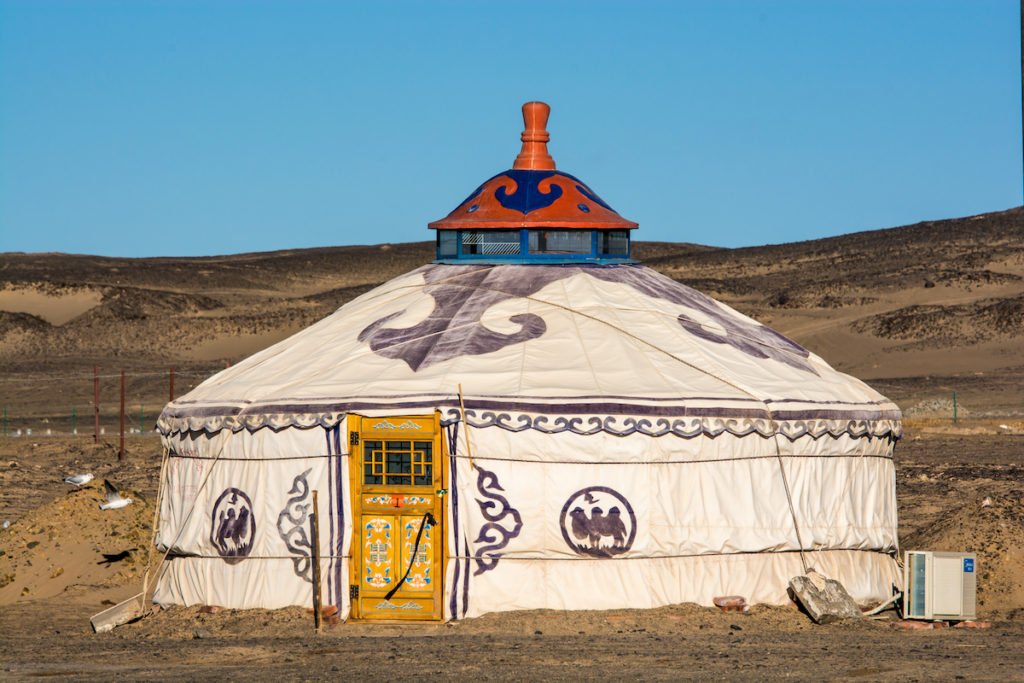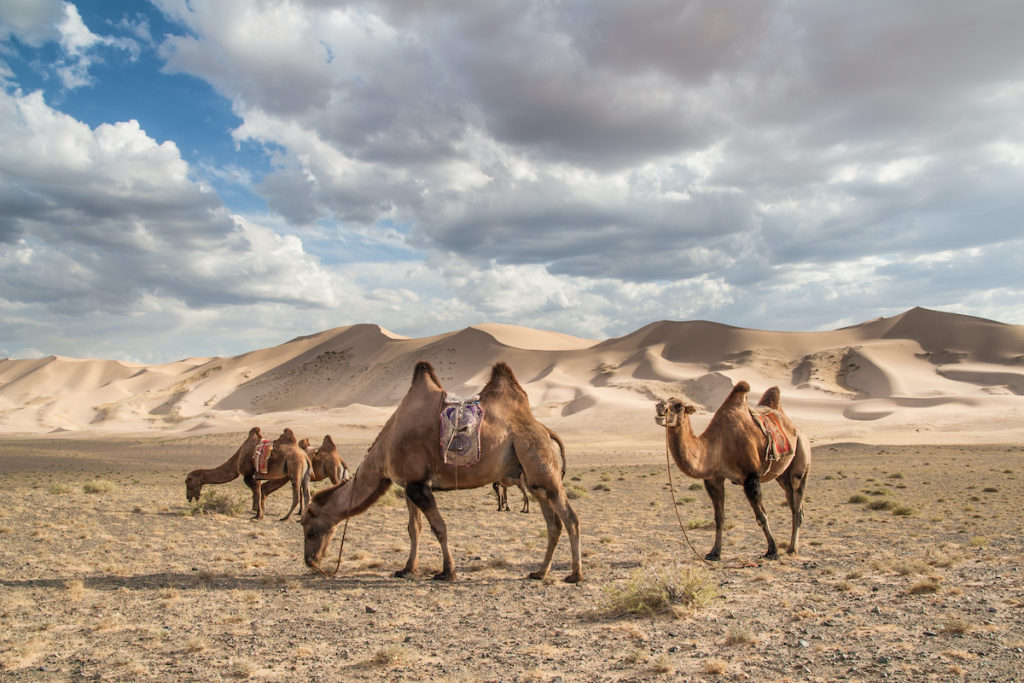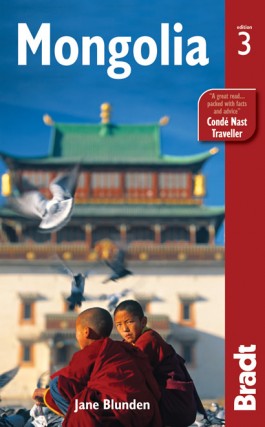Gobi, a term first noted on a French map in 1706, is defined in many different ways: as a gravel landscape without water, as a ‘treeless terrain without marmots and little surface water’, as a desert area waiting to be watered.
The landscape commonly known as ‘Gobi’ stretches 3,000 miles along Mongolia’s southern border and extends to parts of the far northwest, running between the Altai and the Khangai mountain ranges, as well as south into northern China. Principally the Gobi spans six Mongolian provinces (aimags): Ömnögobi, Dornogobi, Dundgobi, Bayankhongor, Gobi-Sümber and Gobi-Altai. It is a wide- open place of huge extremes: mostly it is one huge gravel plain quite unlike any other desert on earth.
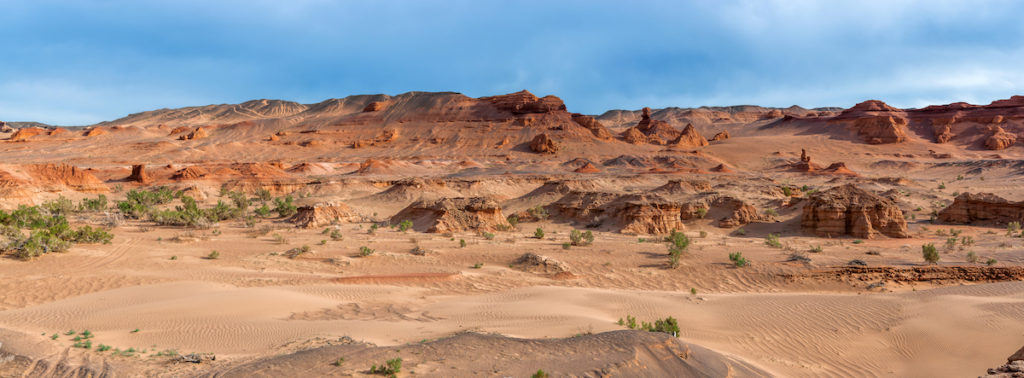
The landscape includes mountain ranges, springs, forests, sand dunes and steppes. Towards the west the Altai peaks rise to over 4,000m. Of the total Gobi area only 3% is the sandy desert type. Fierce sand and windstorms are common and nearly all the region’s soil has been removed by prevailing northwesterly winds and deposited in north central China as loess (fine silt).
‘Here be Dragons’
Two hundred million years ago the Gobi was an inland sea, the site of which was later discovered to be a treasure trove of fossilised dinosaur bones. Ancient cartographers filled in unknown areas of their maps with the words: ‘Here be Dragons’. In the 1920s, this notice appeared across maps of the Gobi Desert.
From 1921 until 1930, five expeditions were launched by the American palaeontologist Roy Chapman Andrews. One of the expeditions’ aims was to search for the origins of man. What Chapman Andrews discovered was a treasure trove of fossils or ‘dragon bones’, as the Mongols and Chinese called them. This surprisingly rich discovery yielded the first nest of dinosaur eggs, which made front-page headlines worldwide.
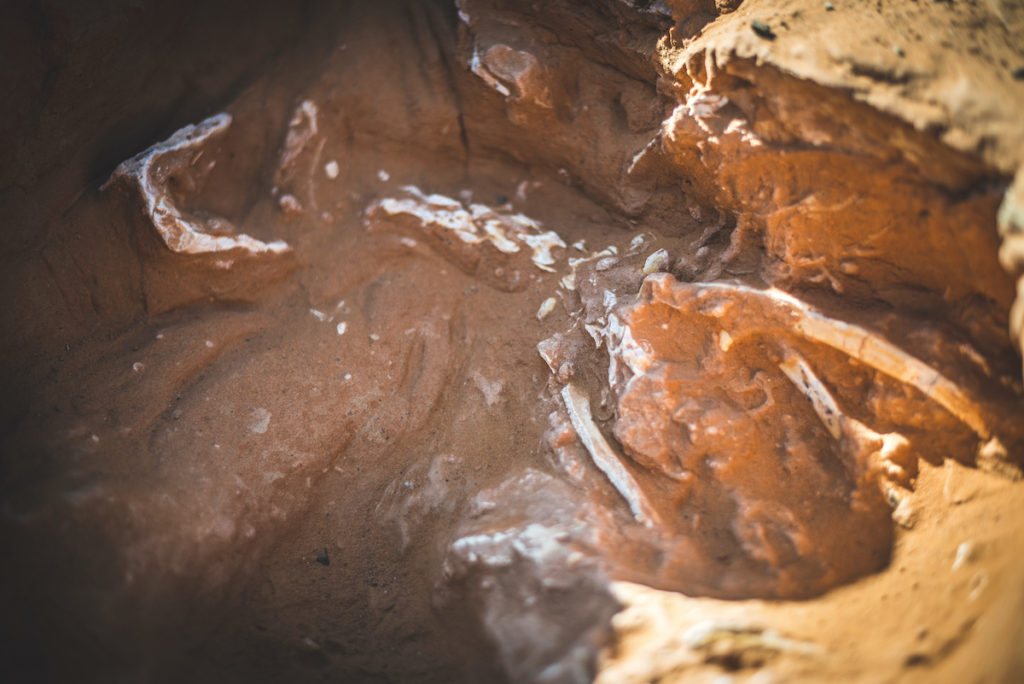
Nine years after a communist government came to power in Mongolia in 1921, Andrews’s expeditions were stopped. This signalled the end of all Western exploration from 1930 until 1990.
In the early 1990s, at the invitation of the Mongolian government, American scientists Malcolm McKenna, Mark Norell and Michael Novacek of the American Museum of Natural History gained access to remote regions in the Gobi where they found numerous new fossils which included a complete protoceratops skeleton, oviraptor eggs, velociraptor claws and a collection of ancient mammals. One significant discovery was the skull of a juvenile hadrosaur, possibly the first hadrosaur found at the Flaming Cliffs area in the South Gobi.
The final home for the wild Bactrian camel
The wild Bactrian camel or khavtgai is more endangered than the giant panda. There are approximately 450 wild Bactrian camels in the Mongolian Great Gobi Reserve A, and around 600 additional camels further south in Xinjiang province in China. It is an amazing creature that lives in some of the world’s harshest environments.
In the Chinese Gashun Gobi there is no fresh water and this former nuclear test site holds herds of wild camels that have not only adapted to drinking saltwater slush, but have also survived over 43 atmospheric nuclear tests.
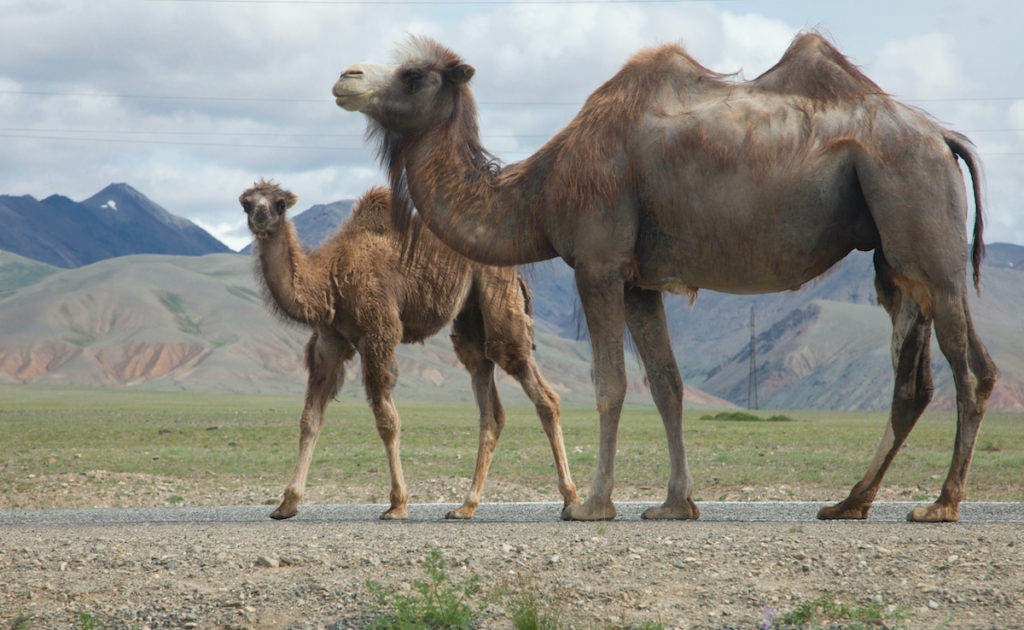
Samples of skin taken from the remains of dead Bactrian camels have been sent to scientists in the Vienna Veterinary University for genetic DNA testing and in every case the results have been remarkable. Each skin sample has shown two or three distinct genetic base differences from the domestic Bactrian camel. In 2008 as a result of these tests, the wild camel was declared a new and separate species and is recognised as such by the International Union for the Conservation of Nature (IUCN).
Compared with its domestic cousins, the wild Bactrian is greyer, slimmer and with smaller-sized humps. It also has a different shaped skull, which is the meaning of the word khavtgai – flat head. This is not a Silk Road runaway, but rather a scientifically proven separate species and one which has survived against all odds for a very long time – over 700,000 years.
What to see and do in the Gobi Desert
Khongoryn Els
Lying around 180km from Dalanzadgad, the dunes of Khongoryn Els are also known as the ‘singing sands’. These dunes are the largest accumulation of sand in the Gobi Gurvansaikhan National Park, covering 965km2. They rise abruptly from the plain, reaching a height of 800m and extend over an area 6–12km wide by 150km long.
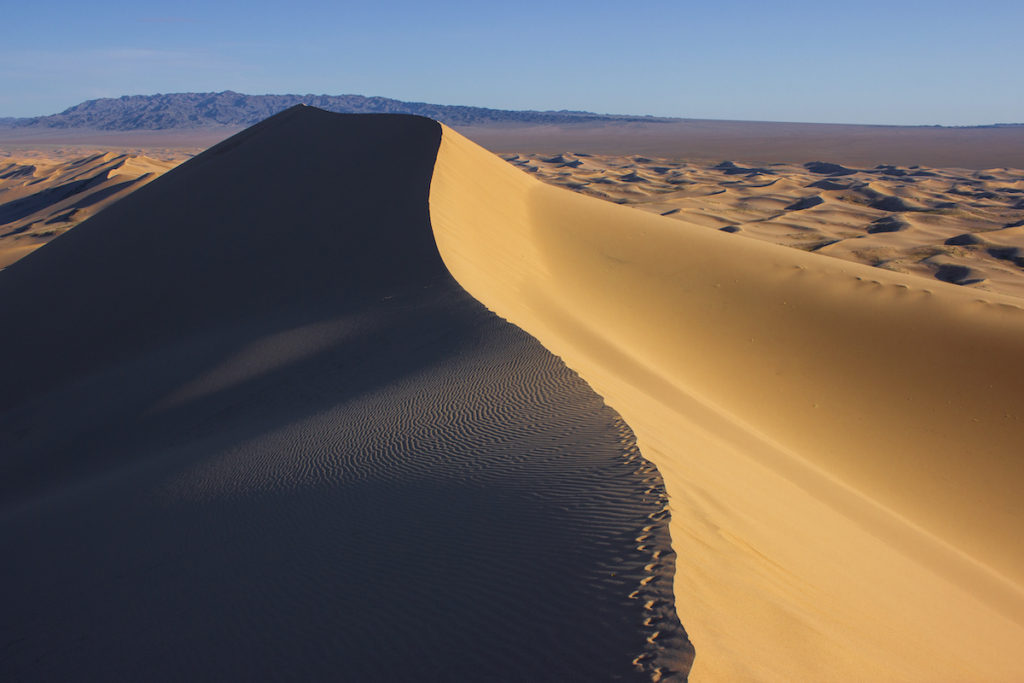
Swept into constantly varying shapes by the wind, part of their attraction is the impressive colours that the yellow-white sands take on with the changing light of day. When the wind blows over the dunes it makes strange sounds like the high-pitched tone of an aeroplane engine about to take off or land.
Yolyn Am
Around 45km west of Dalanzadgad in the Gurvansaikhan Mountains is Yolyn Am Gorge. Yol in Mongolian means ‘bearded vulture’ and Yolyn Am means ‘Vulture’s Gorge’. This magnificent mountain valley has a 40km-long canyon containing a small area of frozen snowmelt at the far end.
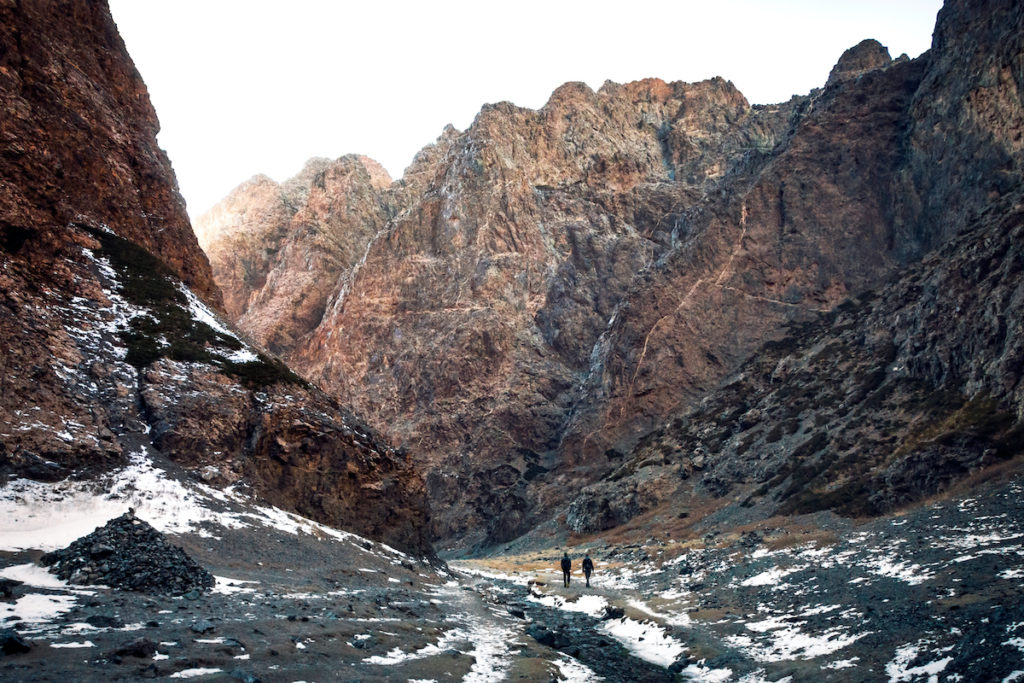
Over the winter months the river water builds up a thick layer of ice, which thaws slowly. In addition, the cliffs of the canyon rise so steeply that they block the sunlight to the river below, so that parts of it remain frozen throughout the year.
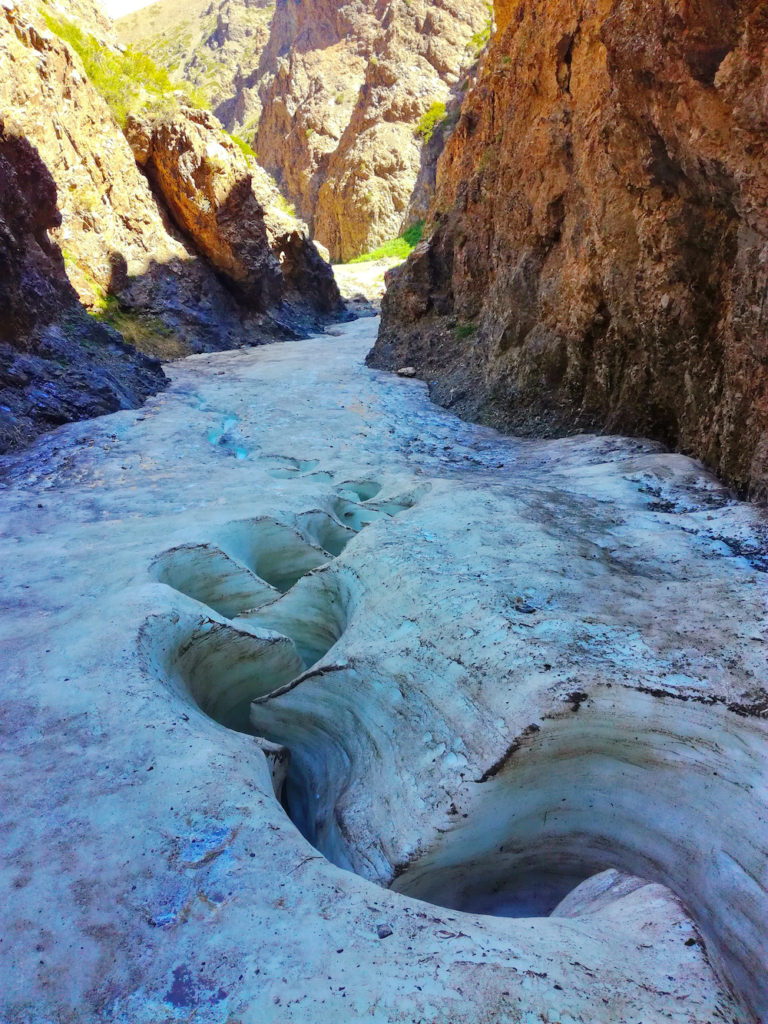
This sunless canyon, although cold and dark, has a particular beauty as you’ll find when you follow the narrow path that hugs the river, broadening in places between the rocks, while buzzards and eagles wheel and glide in the blue skies above and gerbils and picas hide among rocks.
Bayanzag – the Flaming Cliffs
The red sandstone cliffs and canyons of Bayanzag, 65km northwest of Dalanzadgad, are where the American palaeontologist Roy Chapman Andrews first discovered fossil beds of dinosaur bones and the first ever recorded dinosaur eggs in 1922.
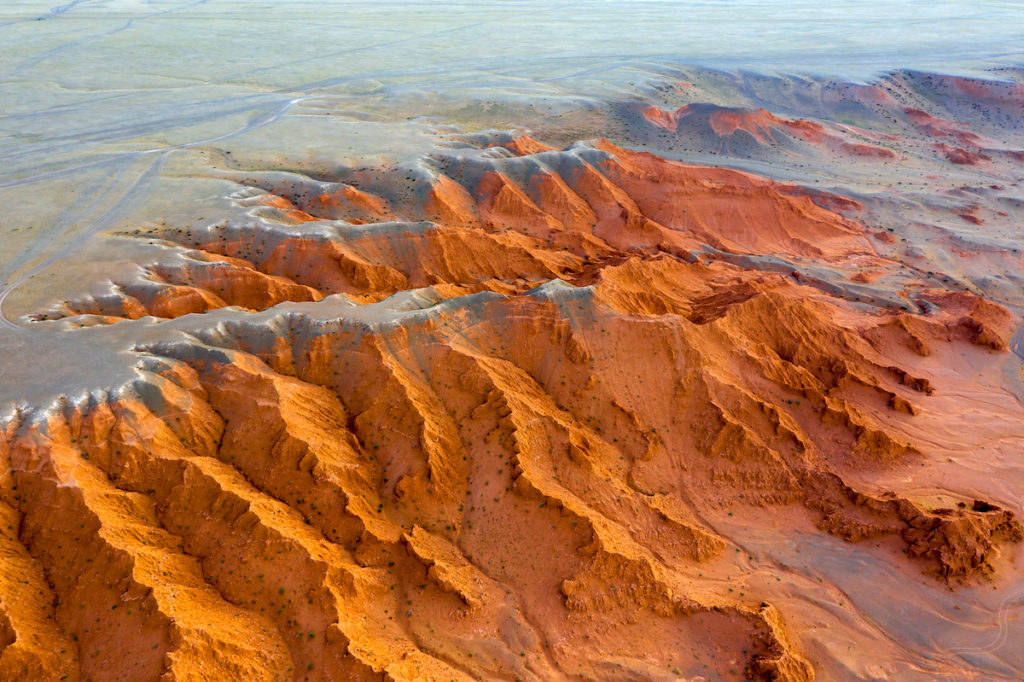
The barren cliffs look strikingly flame-like, especially at sunset. Look out for the desert wheatear and Asian desert warbler. Nearby there are two areas worth exploring: the dunes at Moltsog Els where, alongside, there’s a stand of saxaul; and a site called Tögrögiin Shiree, northwest of Bayanzag, where the dinosaur protoceratops was discovered.
Gobi Gurvansaikhan National Park
This park covers over two million hectares and lies within a few kilometres of Dalanzadgad. It is the largest of Mongolia’s national parks and the second-largest protected area in Mongolia, comprising gravel and rubble plains, salt wetlands, dry valleys, springs and oases. Approximately one thousand families (around 5,000 people) live within the national park, either as nomads or in small settlements.
© SIHASAKPRACHUM, Shutterstock © Jakub Czajkowski, Shutterstock
Surprisingly, despite the barren landscape and hostile climate, the Gobi Gurvansaikhan provides a home to a wealth of wildlife. Fifty-two mammal species have been recorded in the park including wild ass, pikas, Gobi bear, wolf, snow leopard, wildcat, ibex and gazelles. There have also been 246 kinds of birds recorded: the majority are resident breeding birds. Look out for kestrels, lammergeier, vultures, saker falcon and altai snowcock.
More information
If you’re eager to discover more about the Gobi Desert, take a look at our guide:
